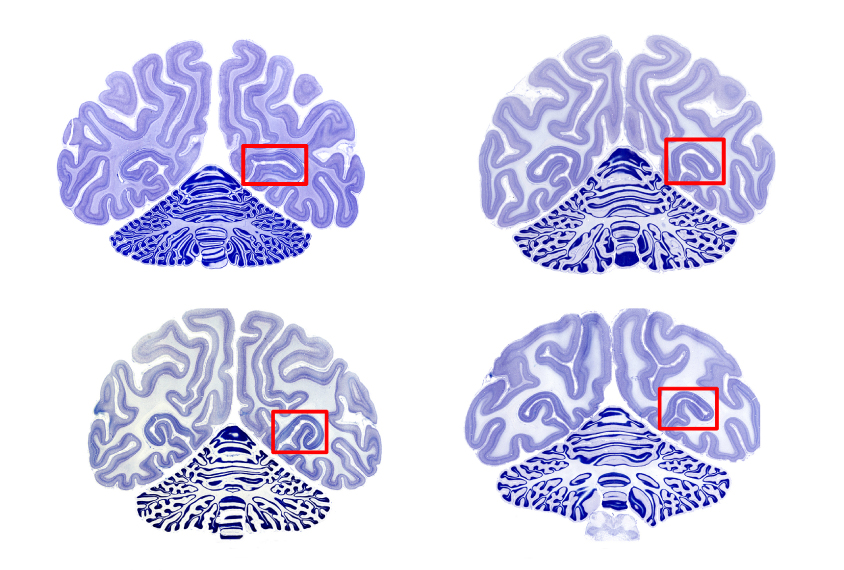
THIS ARTICLE IS MORE THAN FIVE YEARS OLD
This article is more than five years old. Autism research — and science in general — is constantly evolving, so older articles may contain information or theories that have been reevaluated since their original publication date.
Researchers have charted gene expression in the brains of rhesus macaques from before birth into adulthood1. The resulting maps may serve as a reference for brain development in people, and help researchers understand how it goes awry in conditions such as autism.
Much of what is known about the developing brain comes from mice, which differ from people genetically and are much smaller and simpler creatures. The new study analyzed brain tissue from macaques at six stages of prenatal development and four times after birth, up to and including adulthood.
The researchers used a laser to dissect small swaths of the frontal cortex, visual cortex, hippocampus, striatum and amygdala in four monkeys at each stage. They sequenced RNA from each sample. They then overlaid the results onto scans of the developing macaque brain from the NIH Blueprint Non-Human Primate Atlas. The results appeared 13 July in Nature.
The analysis revealed that gene expression changes rapidly in the womb. Most of these changes occur when immature cells give rise to mature cell types, such as neurons and astrocytes.
Time lapse:
After birth, gene expression is relatively stable. Its rate of change in the macaque brain drops 100 fold between embryonic day 40 and adulthood (age 48 months), the researchers found. It fluctuates again during the transition from adolescence to adulthood, and affects genes that play a role in pruning synapses, the connections between neurons.
Autism-linked genes are most highly expressed at the change points: before birth and during the transition to adulthood. By contrast, genes linked to schizophrenia are expressed at the highest levels after birth, when neural circuits are refined.
Genes that direct the formation of axons, the long fibers that conduct electrical signals between neurons, are highly expressed before birth but become silent by adulthood. These genes show coordinated expression with those that build synapses, suggesting that the two sets team up to create neural circuits.
Using previously published data, the researchers compared the expression of 358 genes in the brains of rats to their expression in macaques and people2,3. About 91 percent of the genes have similar expression patterns in people and monkeys, compared with 78 percent between people and rats.
The maps are available at www.blueprintnhpatlas.org and www.brain-map.org.
By joining the discussion, you agree to our privacy policy.